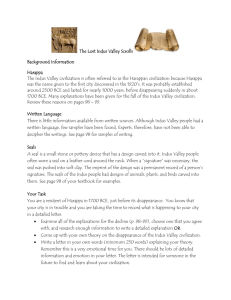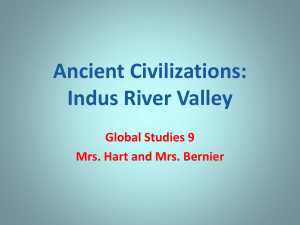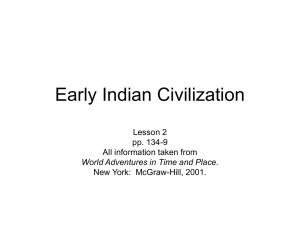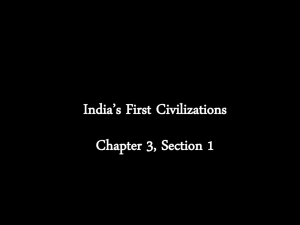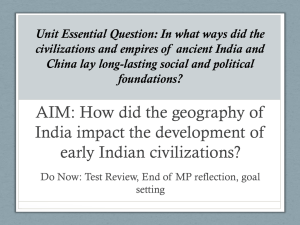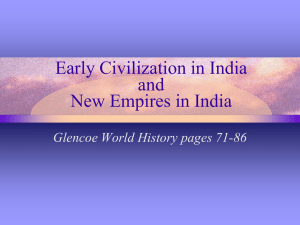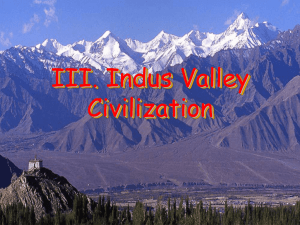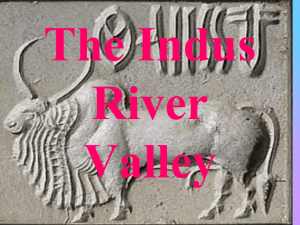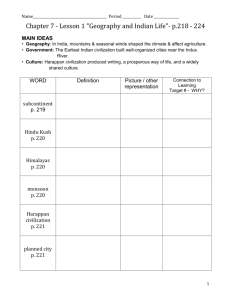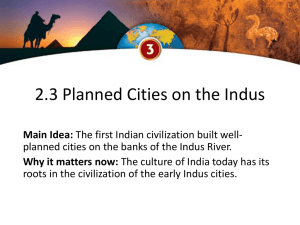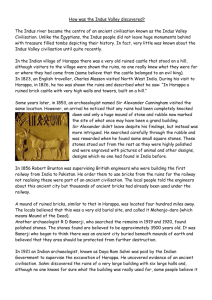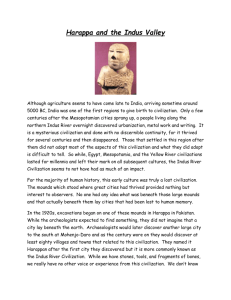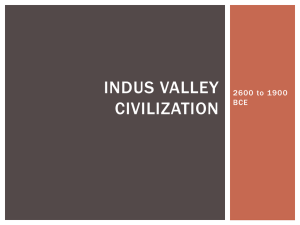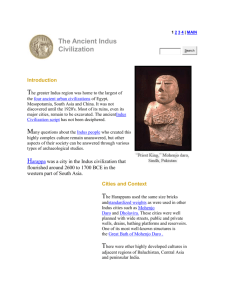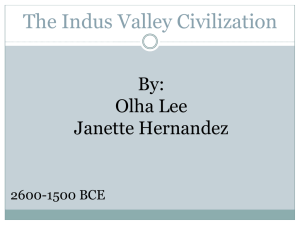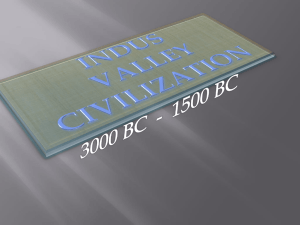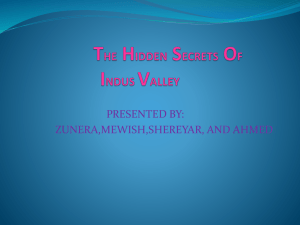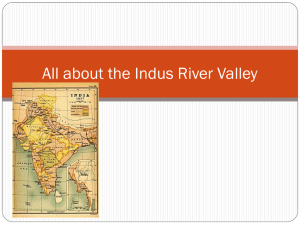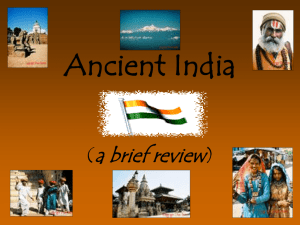Indus River Valley Civilization
advertisement
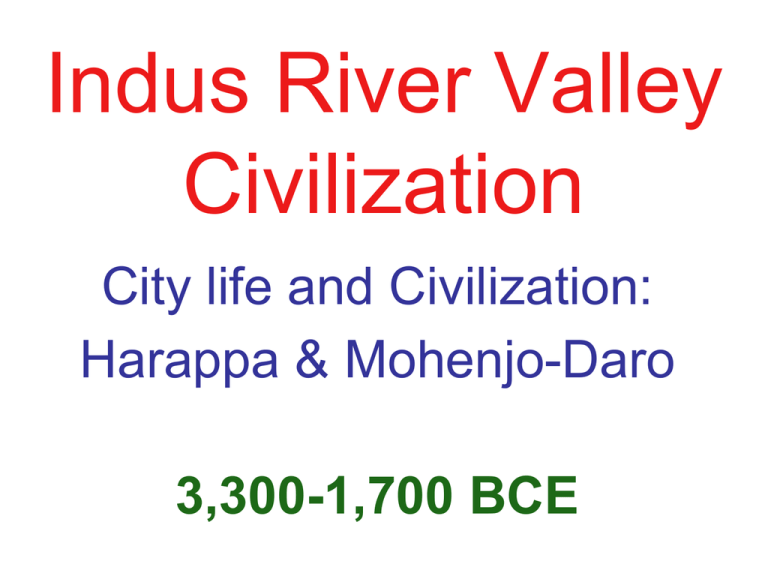
Indus River Valley Civilization City life and Civilization: Harappa & Mohenjo-Daro 3,300-1,700 BCE Ancient River Valley Civilizations Comparative Timeline Indus River Valley • Harappan culture existed along the Indus River in what is now Pakistan. • The cities of Harappa & Mohenjo-Daro were important centers of the Indus valley civilization. • The cities were part of larger socioeconomic networks and interacted with other peoples and cultures. Neighboring Settlements Across Civilizations: Trading Networks & Routes Why would living near the Indus River make these settlements possible? Think Egypt… Think Mesopotamia… Regional Trade Imports and Exports • Imports: gemstones, gold, silver, textiles • Exports: – Agriculture: peas, sesame seeds, dates, & grains – Raw Materials: wood, cotton, livestock, copper, ivory, & shells – Finished goods: beads, ornaments, tools, & pottery • Methods: river boats, animal-pulled carts Terraced Fields for Agriculture Jewelry for Export More Jewelry! Pottery for Export Harappan Socioeconoimc Integration • By 2500 BCE, small communities became cities (integration). • In total, over 1,052 cities and settlements have been found. • Harappa and Mohenjo-Daro were the largest cities. Indus Valley Integration Characteristics of Civilization (Review!) • Cities (dense populations) • Centralized Government (Leaders and laws) • Job specialization • Social Classes • Organized religion • Art/architecture (how did they use art?) • Writing System • Public Works (streets, defense & irrigation systems) Based on what you have learned so far….. Was the ancient Indus River Valley a true “Civilization”? Discuss & Explain! Problems with Evaluating the IRV: • We do NOT have important information: –Their language remains undeciphered • No tax records or literature • No record of religious beliefs and rituals –No names of kings, grand palaces, large temples, or ornate tombs –No warrior class or monuments to military conquests • Little evidence of divided social classes Indus Writing • The origins of Indus writing can now be traced to c. 3,300-2,800 BCE at Harappa. • Some inscriptions were made on the bottom of pottery. • This inscription appears to be three plant symbols. Ancient Indus: Why no Translation? BUT! The IRV had major cities with sophisticated infrastructure Mohenjo-Daro & Harappa • The cities had: – – – – secure walls, good plumbing, indoor plumbing, sewers, and drainage systems public squares and gathering places. • Mohenjo-Daro & Harappa had more than 35,000 residents. • The cities serviced more than 1,000 other towns and villages in the region. Mohenjo-Daro Note the high walls and use of mud bricks. The Great Bath What Purpose did it serve? 12 meters high, 7 meters wide, 2.4 meters deep The Great Bath • The "great bath" is the earliest public water tank. • Two staircases lead down into the tank from the north and south. • At the foot of the stairs is a small ledge with a brick edging that extends the entire width of the pool. • Archaeologists believe it was for ritualistic services. Streets & Alleyways • At MohenjoDaro streets and alleyways led to private neighborhoods. An Artist’s Conception of Harappa Wells • Private wells were rebuilt over many generations for large households and neighborhoods. • This well stands like a chimney because the surrounding earth has been removed by excavation. Bathing Areas • Public bathing areas may also have been used for washing clothes as is common in many traditional cities in Pakistan and India today. Granary: What was it for? • This "granary" in Harappa is a brick structure that was built on a massive foundation over 45 meters north-south and 45 meters east-west. Harappan Workshops • Large quantities of manufacturing debris have been found in this area indicating the presence of workshops for making beads, ornaments, pottery, & tools. Harappa’s Layout Choose a prompt & write! 1. The Indus River Valley amounts to a true civilization because…. OR 2. The Indus River Valley does NOT amount to a true civilization because… Prepare a well developed paragraph with a completed topic sentence AND evidence.


